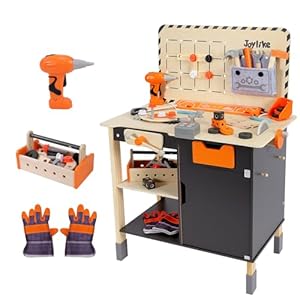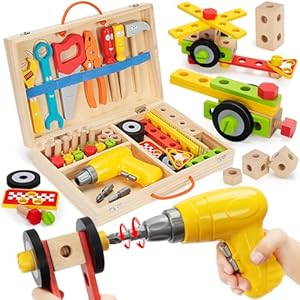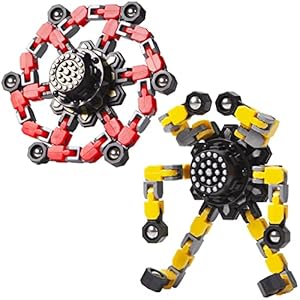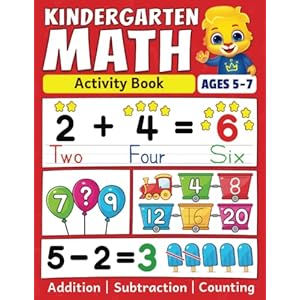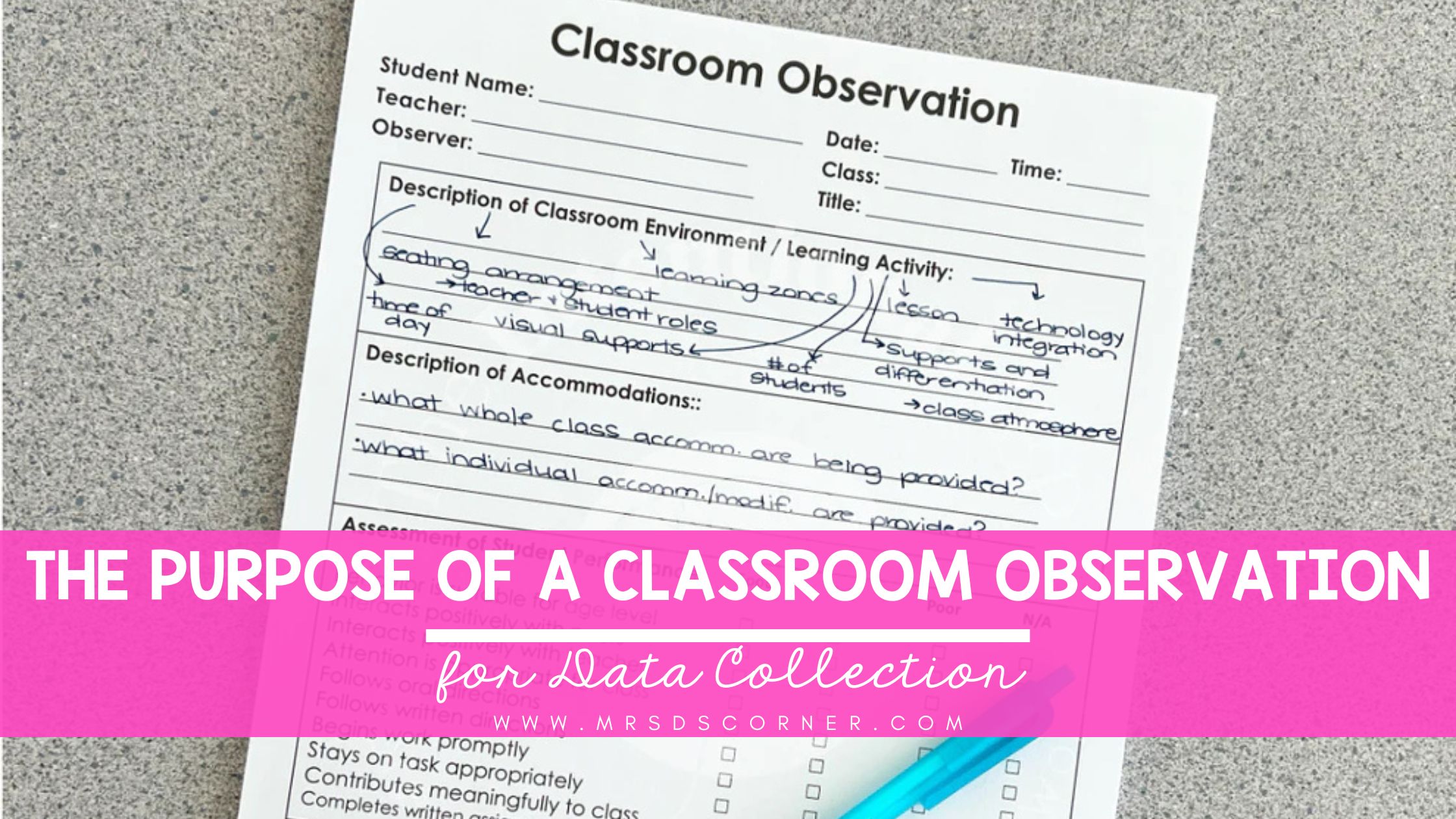
As particular educators, we all know that genuine, significant information is the heartbeat of efficient instructing. It helps us write correct IEPs, monitor progress, information interventions, and reply to every scholar’s distinctive studying wants. One of many richest methods to collect this information is thru classroom observations.
Observations permit us to see how college students perform of their pure studying atmosphere. As a substitute of relying solely on assessments or formal testing, classroom observations give us a real-time take a look at how college students be taught, behave, and work together. On this submit, we’ll take a look at why and when observations are acceptable, how they profit lecturers and college students, and sensible methods to make the method easy and efficient.
What Is a Classroom Remark?
A classroom commentary is a structured interval of watching and recording what college students do throughout instruction, transitions, or unbiased work. It’s not about judging instructing—it’s about understanding scholar habits and efficiency.
Throughout an commentary, you would possibly monitor issues like:
- educational engagement (participation, job completion, following instructions)
- habits (on-task vs. off-task, self-regulation, peer interplay)
- social/emotional abilities (communication, frustration tolerance, initiation of interplay)
- progress towards IEP objectives within the pure classroom setting
By specializing in these areas, you get a window into how the scholar actually capabilities day-to-day.
Why and When Are Observations Applicable?
Observations are particularly helpful whenever you want genuine information. A check or quiz exhibits what a scholar can do in a structured atmosphere, however it doesn’t at all times seize how they apply abilities in actual time. Observing throughout common instruction exhibits the distinction between “can do” and “does do.”
They’re additionally highly effective for progress monitoring. Checking in by way of observations throughout the college yr reveals development tendencies or highlights areas the place a scholar could also be plateauing.
One other time to make use of observations is whenever you’re evaluating interventions. Let’s say you place a brand new habits assist in place—are you seeing modifications? Observations allow you to see how efficient a method actually is.
When conducting a purposeful habits evaluation (FBA), observations are important. They aid you establish triggers, see what occurs earlier than and after a habits, and spot patterns which may not be apparent in any other case.
Lastly, observations are notably useful throughout transitions—whether or not it’s the start of a brand new college yr, a scholar shifting into a unique classroom, or modifications to their schedule. Watching how they adapt supplies priceless perception into their wants.
The Advantages of Classroom Observations
One of many greatest advantages of classroom commentary is its real-world validity. You’re not asking a scholar to carry out in a man-made state of affairs—you’re seeing them of their pure atmosphere. This makes your information extra reliable and actionable.
Observations additionally permit you to accumulate wealthy, detailed data. As a substitute of a sure/no or proper/unsuitable measure, you seize context: when behaviors happen, how ceaselessly, what appears to set off them, and the way the scholar responds afterward.
As a result of they are often accomplished rapidly and infrequently, observations offer you extra frequent information factors than conventional assessments. This makes it simpler to catch issues early and regulate helps earlier than small struggles snowball.
Lastly, observations assist individualized instruction. By watching fastidiously, you’ll discover strengths and boundaries you would possibly miss in any other case. This helps you tailor lodging and interventions in order that they’re actually significant.
The right way to Conduct Classroom Observations Successfully
The important thing to significant commentary is planning. Begin by defining your focus. As a substitute of vaguely watching “how the scholar behaves,” be particular. For instance: “How does the scholar reply throughout transitions?” or “How usually does the scholar provoke peer interplay?”
Subsequent, select occasions and settings. Observe throughout completely different topics, in whole-group and small-group classes, and through much less structured occasions like recess or lunch. This provides you a fuller image.
Preserve your recording instrument easy. Tally marks, fast checklists, or brief notes are sometimes simpler than lengthy narrative descriptions. The objective is to seize what’s taking place in actual time, not write a novel.
To maintain observations goal, stick with observable, measurable behaviors. Write “scholar raised hand and requested for assist” as a substitute of “scholar was pissed off.” Goal notes are extra helpful for information evaluation and extra defensible in IEP conferences.
When you’ll be able to, jot down the antecedents and penalties—what occurred instantly earlier than and after the habits. This could uncover patterns that specify why a habits happens.
Most significantly, make commentary a common follow. A one-time commentary might catch an remoted incident. Weekly or biweekly observations, even for simply 5–10 minutes, are much more dependable for recognizing tendencies.
Making Knowledge Assortment Simpler
Having the precise instrument readily available could make or break your commentary routine. The Classroom Observation Data Notepad is a type of instruments that simplifies every thing.
With pre-formatted sheets, you’ll be able to rapidly jot down what you see with out fumbling for scratch paper or printing off a brand new kind each week. The notepad contains 50 ready-to-use sheets, making it simple to remain constant together with your information assortment. Plus, the usual 8.5” x 11” dimension matches proper right into a clipboard or binder, so it’s at all times accessible.
By streamlining the method, instruments like this notepad allow you to focus extra on observing and fewer on logistics.
Overcoming Frequent Challenges
One of many greatest challenges lecturers point out is time. Observations don’t must take up your entire class interval. Even 5 centered minutes can provide you highly effective information if what you’re on the lookout for.
One other problem is consistency. If you happen to neglect to watch till proper earlier than an IEP assembly, the information isn’t as sturdy. Construct it into your weekly routine, or share the duty with crew members so observations occur extra often.
Generally lecturers really feel overwhelmed with an excessive amount of element. The repair? Keep on with your focus. In case your objective is to look at how usually a scholar raises their hand, don’t get sidetracked writing down each different habits.
And eventually, don’t let your notes sit in a drawer. Evaluation and use your information. Construct in reflection time weekly or biweekly to see what tendencies are rising and the way you would possibly want to regulate instruction or helps.
Driving Pupil Progress
Classroom observations are some of the highly effective instruments in a particular educator’s toolbox. They offer us genuine, real-time perception into how college students perform, assist us monitor progress, and information significant selections about interventions and helps. By observing often and with goal, we will collect the form of information that actually drives scholar development.
And whenever you’re able to make observations simpler and extra constant, take into account including the Classroom Observation Data Notepad to your toolkit. With the precise system in place, you’ll spend much less time worrying about logistics and extra time specializing in what issues most—your college students.
Trending Merchandise


